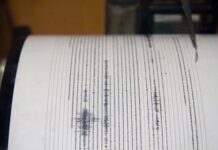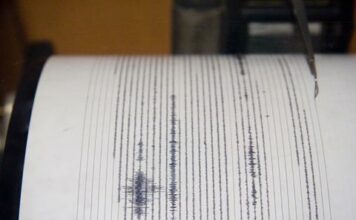GILROY
– Scores on this year’s Advanced Placement exams did not improve
compared to 2002, despite more students than ever enrolling in
Gilroy High School’s AP classes.
By Lori Stuenkel
GILROY – Scores on this year’s Advanced Placement exams did not improve compared to 2002, despite more students than ever enrolling in Gilroy High School’s AP classes.
In fact, the increased enrollment could drive the median score down, so AP teachers see steady scores in a positive light, said AP coordinator and teacher Kanani Pratt
Pratt presented this spring’s AP exam scores to school board trustees during the Oct. 2 meeting, noting that scores in many areas decreased while others increased, but that more students took AP exams than in previous years.
While GHS students’ performance means they are likely still scoring below the national average, AP teachers are pleased with the results, given the school’s policy that encourages any interested student to enroll and, last year, required them to take the exam. Schools vary on their enrollment requirements and most encourage AP students to take the exam.
Enrollment in the AP program has increased, so steady performance is a good sign, Pratt said.
“(The scores) were great,” Pratt said. “Given the increase in enrollment we had, the numbers really stuck. Statistically, if you would have more students in your class, more would fail.”
GHS officials support an open enrollment policy because they want to give students the opportunity to challenge themselves with more rigorous coursework.
Approximately 20 more students enrolled in the AP program last school year than in 2001, with several students taking more than one AP class. More students took more exams this spring as well: 474 AP exams were taken in spring 2003 while 408 were taken in 2002.
AP courses are among the most rigorous at the high school level and warrant an extra grade point on students’ transcripts. AP exams are standardized tests given at the end of the year in each subject. Graded on a scale of 1 to 5, a passing score is 3 or better. Students can receive college credit for passing the test.
At the school board meeting, member Tom Bundros suggested that, with the addition of honors courses for freshman and sophomores, students might be more successful in AP classes in the coming years. Pratt said that teachers are working on aligning honors courses with AP courses to prepare students for writing at an AP-appropriate level. She also predicted that even more students would enroll in AP classes after participating in honors level classes.
Forty-one percent of juniors and seniors passed their corresponding AP English exam, a decrease of about 10 percentage points from 2002 and about 20 percentage points below the 2002 national average. A representative for the College Board, which administers the AP tests, said the 2003 national average will not be available for a few more weeks.
Principal Bob Bravo said that the smaller percentage of students who passed AP exams is misleading because more total students took and passed their exams.
“I’m happy that the bottom line is, more kids (are) passing them,” Bravo said.
Of students in Pratt’s AP macroeconomics and U.S. government classes, 61 percent scored a 3 or higher, which is 2 percentage points more than last year. Her students have consistently done well on the exam, she said. She readies her students for the test through lots of practice, such as timed writings.
“There should be absolutely no reason why a student should not be prepared and should not take the test,” Pratt said.
Sixty-three percent of students in Pratt’s AP macroeconomics class passed the exam, which is about 20 percent fewer than 2002.
“A lot of that has to do with the make-up of the class,” Pratt said. She had 42 students taking macroeconomics last year, but only 17 the year before.
Students in Wayne Scott’s AP calculus class improved exam performance – 58 percent passed compared to 2002’s 45 percent – although he cautioned against comparing one year’s students against the next or even looking at the national average.
“We’re heading the right direction as far as strongly encouraging our students to take the exam; that’s the right way to go,” Scott said. “So comparing us to a national average can be kind of dangerous because not everyone is requiring their students to take the exams.”
Scott also teachers AP statistics, in which 17 percent of students passed the year-end exam, compared with 14 percent last year and 22 percent in 2001. Nationally, 57 percent of students passed the exam last year.
“It’s a little disappointing, and I’m going to try a few things differently this year, but I’m not all that surprised about it,” he said.
Considering the range of students who take AP statistics, Scott said he would be happy if 30 or 40 percent of students were passing the test, even if that is below the national average.
“Students are kind of pushed towards (statistics) because it’s one of the easier AP classes, so some students who aren’t qualified attempt it, and I’m all for that.”
“That rate will go up as students who take Algebra II start coming into the statistics program,” Scott said.
GHS is in the process of phasing out Integrated mathematics courses and is returning to the traditional Aglebra I and II courses, which better prepare students for the AP tests, Scott said.
GHS students will not be required to take the year-end exam this May, although they will be “strongly encouraged” to do so, Bravo said.













